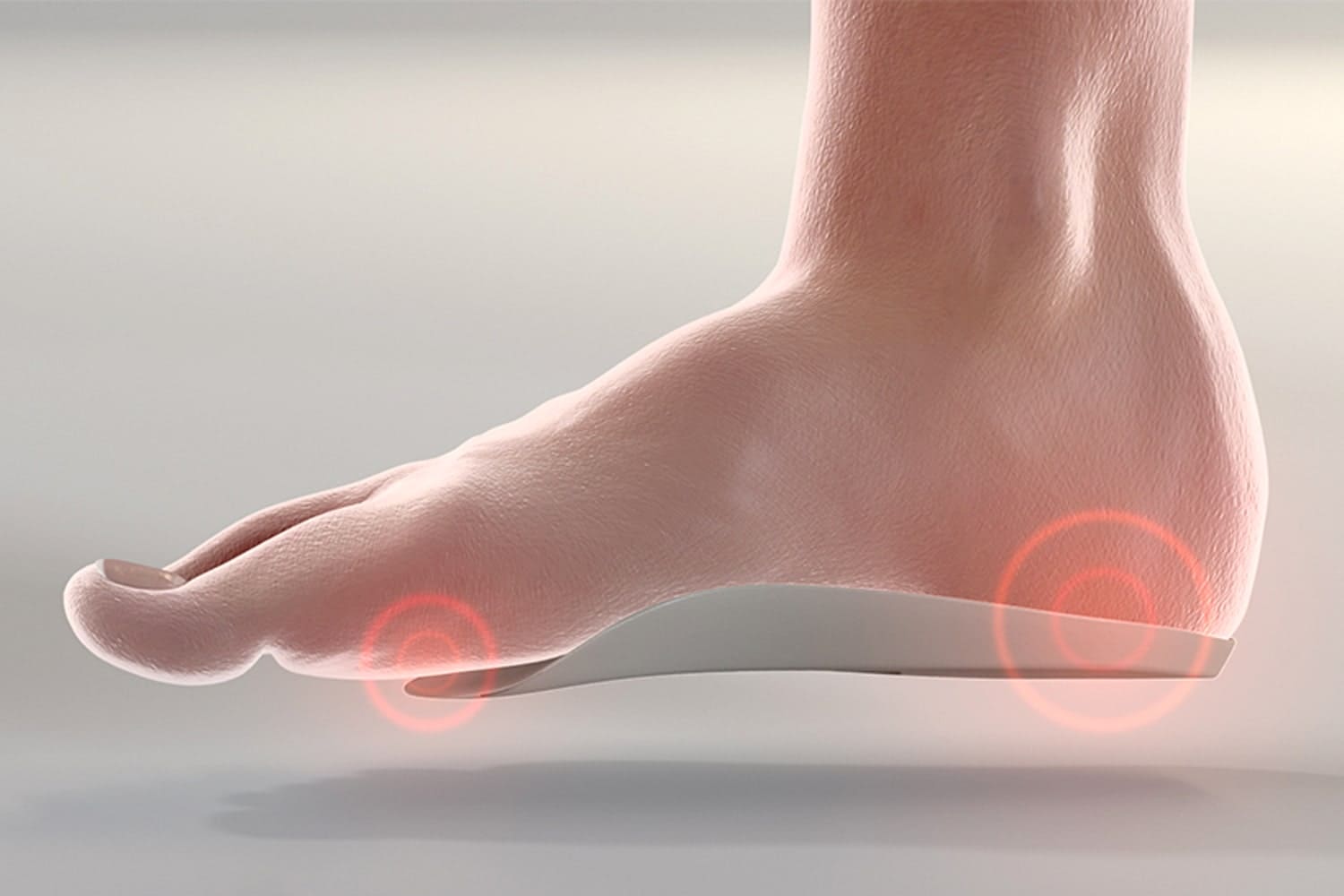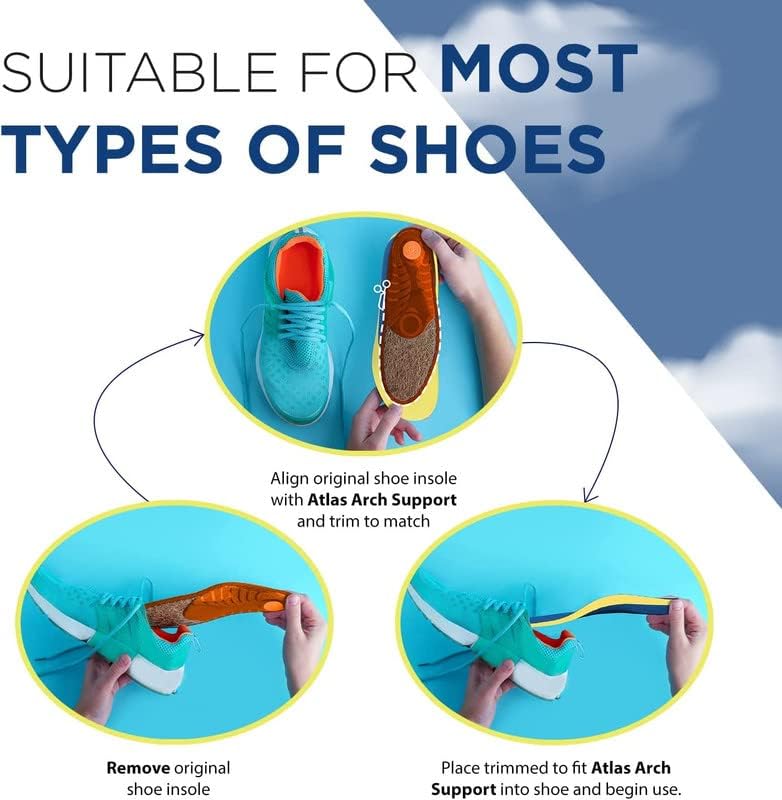
Introduction
When it comes to achieving optimal comfort and maintaining foot health, the selection of appropriate shoe insoles holds utmost importance. Regardless of whether you are an active individual, a dedicated professional who spends long hours on their feet, or someone who frequently experiences discomfort in their feet, the proper choice of shoe insole can have a profound impact. This comprehensive manual delves into a selection of premier shoe insoles that are currently on the market, assisting you in effectively navigating through the plethora of options available in order to discover the ideal fit that caters to your unique requirements.
Table of Contents
An overview of different insole types
Insoles, also known as shoe inserts, come in various types, each designed to address specific needs or foot conditions. Here’s an overview of different insole types:

Comfort Insoles
Typically made from gel or foam, comfort insoles are designed for cushioning and minor support. They can be full-length or 3/4-length and are ideal for daily wear, especially if you spend a lot of time on your feet.
Support Insoles
Made from harder materials, support insoles offer a firmer structure. They are designed to provide balance and support for the foot’s natural structure. They’re beneficial for individuals with structural misalignments or those who need extra arch support.
Sport/Activity-Specific Insoles
These insoles are designed for specific activities like running, hiking, or skiing. They often have extra cushioning at high-impact areas and are made to fit snugly in athletic footwear.
Orthotic Insoles
Often custom-made or over-the-counter, orthotic insoles are designed to correct foot abnormalities. They are used for therapeutic reasons, such as treating plantar fasciitis, flat feet, high arches, and other foot conditions.
Heat-Moldable Insoles
These insoles can be heated and then molded to the shape of your foot. They offer a semi-custom fit and are useful for individuals who need specific support but don’t require fully custom orthotics.
Memory Foam Insoles
Made from memory foam, these insoles mold to the shape of the foot over time, offering a personalized fit. They are great for cushioning and comfort but may not provide as much support as other types.
Gel Insoles
Gel insoles are known for their shock-absorbing properties. They are particularly good for activities that put a lot of stress on the feet, like running or high-impact sports.
Arch Support Insoles
Specifically designed to support the arches of the feet, these insoles can help alleviate pain associated with conditions like flat feet or plantar fasciitis.
Heel Cups or Heel Inserts
Focused on the heel area, these insoles provide support and cushioning to the heel. They are often used to relieve heel pain or conditions like Achilles tendonitis.
Each type of insole serves a different purpose, and the best choice depends on individual needs, foot type, and the specific issues or activities you are addressing. Having explored the variety of insoles available, let’s examine how they function in everyday situations.
How each type of insole performs in day-to-day activities
When discussing how different types of insoles perform in day-to-day activities and their impact on common foot conditions like plantar fasciitis or flat feet, it’s important to consider their design, material, and intended use. Here’s a breakdown:
Comfort Insoles: Ideal for day-to-day wear, especially if you’re on your feet for long periods. They provide cushioning and minor support, which can alleviate general foot fatigue but may not be sufficient for specific foot conditions.
Support Insoles: These are more rigid and offer better arch support, making them suitable for day-to-day activities that require standing or walking for extended periods. They can help in managing symptoms of plantar fasciitis by providing better arch support and distributing pressure more evenly.
Sport/Activity-Specific Insoles: Designed for specific physical activities, these insoles can enhance performance and comfort during sports or exercise. They often have extra padding in high-impact areas, beneficial for activities that put stress on the feet.
Orthotic Insoles: These are particularly effective for individuals with specific foot conditions like flat feet or plantar fasciitis. Custom orthotics are tailored to individual needs, providing targeted support and alignment correction, which can significantly alleviate pain and discomfort.
Heat-Moldable Insoles: They offer a personalized fit and can be quite effective in day-to-day activities. They provide customized support, which can be beneficial for various foot conditions, including flat feet.
Memory Foam Insoles: These insoles conform to the foot’s shape, providing personalized comfort. They’re great for cushioning during everyday activities but may not offer enough support for serious foot conditions.
Gel Insoles: Excellent for activities that involve a lot of walking or standing. The shock-absorbing properties can help reduce foot fatigue and are beneficial for people with heel pain or plantar fasciitis.
Arch Support Insoles: Specifically designed to support the arches, these insoles can be very helpful for people with flat feet or high arches. They help distribute pressure evenly across the foot, which can alleviate pain associated with arch problems.
Heel Cups or Heel Inserts: These are focused on providing support and cushioning to the heel area. They are particularly useful for conditions like heel spurs or Achilles tendonitis and can provide relief during daily activities.

Our Top Picks
Atlas Arch Support Original Shoe Insoles
Stridetek Tactical Trainer Orthotic Shoe Insoles
EasyFeet Plantar Fasciitis Arch Support Shoe Insoles Review
Dr. Scholl’s Running Shoe Insoles Review
Currex RunPro Shoe Insoles Review
A concise table summarizing the key points of each insole

| Insole Type | Support Type | Material | Ideal For | Pros | Cons |
|---|---|---|---|---|---|
| Atlas Arch Support Original | Structural, Comfort | Semi Rigid TPU, Gel | Foot, Lower Leg Issues | Enhanced Support | Fit Specificity |
| Stridetek Tactical Trainer | Patented, Metatarsal | Patented Tech | High-Performance Activities | Versatility, Support | Fit, Casual Wear |
| EasyFeet Plantar Fasciitis | Hard Arch | TPU, Memory Foam | Plantar Fasciitis, Pain | Focused Support | Comfort for Some |
| Dr. Scholl’s Running | Triple Zone | Not Specified | Running, Shock Absorption | Cost-Effective | Space, Padding |
| Currex RunPro | Customizable Arch | Bamboo, Charcoal | Customized Runner Support | High-Quality Materials | Expense |
Atlas Arch Support Original Shoe Insoles
Overview
The Atlas Arch Support Original Shoe Insoles have been meticulously crafted to provide both structural assistance and optimal comfort. These insoles are specifically engineered to ward off prevalent issues that often plague the feet, such as excessive inward rolling of the foot (known as overpronation), plantar fasciitis, and overall discomfort in the arches or feet.
Key Attributes
Design: Orthotic Shoe Inserts
Arch Support: Offered in both regular and high arch options, featuring a 5mm variance in arch height.
Composition: A blend of Semi Rigid TPU Shell, Gel Heel Cushion, PU Foam, and a Velvet Top Cover.

In-Depth Analysis
| Performance |
| This shoe insert showcases a partially firm TPU casing that functions as a safeguard to avert foot collapse while walking, guaranteeing accurate foot movement. |
| The gel cushion at the back of the inserts offers substantial shock absorption upon heel contact, lessening the force exerted on the interconnected system of bones and muscles. |
| Comfort |
| The mid-layer of the insole, made of polyurethane (PU) foam, provides structural comfort and retains its shape effectively thanks to its high rebound characteristics. |
| A velvet top layer contributes to breathability and moisture management, thereby improving the overall comfort for the foot. |
| Fit and Feel |
| These insoles are crafted to seamlessly fit into most types of athletic footwear and come in pre-sized options to ensure a comfortable experience while walking. |
| It’s advised to wear them for a few hours initially and then gradually increase the wearing time over a week for optimal adjustment. |

Benefits
- Enhanced Support: Delivers sturdy arch aid, appropriate for diverse foot ailments.
- Shock Relief: The gel heel padding efficiently mitigates impact, advantageous for foot well-being.
- Moisture Management: The PU foam and velvety upper surface guarantee coziness and regulate moisture.
Constraints
- Proper Fit: Although the insoles come in pre-cut sizes, it is crucial to choose wisely to guarantee the optimal fit.
- Adaptation Period: Users might require a certain amount of time to get accustomed to the sensation and support provided by the insoles.
Stridetek Tactical Trainer Orthotic Shoe Insoles
Overview
Stridetek is renowned for creating advanced shoe insoles, initially designed for top-tier athletes and military special forces. Their products focus on pain reduction, performance enhancement, and promoting correct biomechanics.
Key Attributes
Design: Orthotic Insoles crafted for high-intensity activities.
Arch Support: Offers comprehensive support for all types of arches.
Composition: Composed of a blend of patented technologies for biomechanical reinforcement.

In-Depth Analysis
| Performance |
| Tailored for the intense requirements of military personnel, emergency responders, and competitive athletes. |
| Proven effective in mitigating issues like plantar fasciitis, shin splints, and general foot discomfort. |
| Comfort |
| Integrates unique patented technology, such as a metatarsal riser, for sustained comfort during movement. |
| The blend of heel support, arch support, and metatarsal riser ensures proper biomechanical alignment, thus improving overall foot comfort. |
| Fit and Feel |
| Compatible with a wide range of shoe styles, offered in multiple sizes. |
| Advisable to select a size half a size larger for optimal fit, highlighting the importance of precise sizing for maximum comfort and efficacy. |

Benefits
- Enhanced Arch Support: Delivers strong support across various activities.
- Unique Metatarsal Riser: A distinct feature that assists in correct foot alignment.
- Adaptability: Suitable for demanding professions and active lifestyles.
Constraints
- Fit Considerations: May not seamlessly fit all shoe varieties, necessitating careful size choice.
- Specialized Nature: While beneficial for high-activity use, its specific design may not be as fitting for casual or less strenuous situations
EasyFeet Plantar Fasciitis Arch Support Shoe Insoles Review
Overview
These insoles are crafted to specifically tackle the challenges of plantar fasciitis and other foot pains. They feature a distinctive hard arch design made from thermoplastic polyurethane, ensuring durability and effective pain management.
Key Attributes
Design: Orthotic Insoles for Plantar Fasciitis
Arch Support: Suitable for All Arch Types
Composition: Thermoplastic Polyurethane with Memory Foam Layer

In-Depth Analysis
| Performance |
| The EasyFeet insoles offer strong support to the heel and plantar fascia, aiding in alleviating pain and ensuring proper foot alignment. |
| This is particularly useful for reducing foot pressure and muscle fatigue during intense activities or prolonged standing. |
| Comfort |
| Despite their firm support, these insoles include a memory foam layer for added comfort and an odor-neutralizing top layer, enhancing the overall user experience. |
| Fit and Feel |
| The hard backing provides significant support but may initially feel pressurizing on the arches, necessitating a period of adaptation for some users. |

Benefits
Targeted Support: Effectively relieves plantar fasciitis-related pain.
Versatile Use: Appropriate for various ages, genders, and activities.
Quality and Comfort: Balances support and comfort at an affordable price.
Durable Design: Built for regular use without losing shape.
Constraints
Arch Support Intensity: May not be universally comfortable due to the firmness.
Adjustment Period: Some users might need time to get accustomed to the support level.
Dr. Scholl’s Running Shoe Insoles Review
Overview
Designed to boost the running experience, Dr. Scholl’s Running Insoles offer exceptional shock absorption and support. Their triple-zone design caters to runners’ needs, aiding in injury prevention and reducing the impact of running on hard surfaces.
Key Attributes
Design: Running Insoles
Arch Support: Suitable for All Arch Types
Triple Zone Protection: Focuses on the ball of the foot, arch, and heel.

In-Depth Analysis
| Performance |
| Combines padding and reinforced arch support to absorb shock effectively, enhancing comfort during runs. |
| Comfort |
| Noted for providing a lighter stride due to their shock absorption capabilities. |
| Fit and Feel |
| May tighten the fit of running shoes due to their volume. Additional metatarsal padding is beneficial for some but may be uncomfortable for others. |

Benefits
- Shock Absorption: Reduces shock by up to 40%, easing the impact on feet and joints.
- njury Prevention: Alleviates common running injuries.
- Cost-Effective: Affordable option for runners.
Constraints
- Fit in Shoes: May occupy significant space in running shoes.
- Metatarsal Padding: Not suitable for all, especially those without metatarsalgia.
Currex RunPro Shoe Insoles Review
Overview
The Currex RunPro insoles, developed in Germany, are specifically designed for runners. They address common running-related injuries by offering enhanced support and shock absorption.
Key Attributes
Design: Running Insoles.
Arch Support: Customizable for low, medium, or high arches.
Composition: Bamboo and charcoal mid-layer.

In-Depth Analysis
| Performance |
| Provides rigid arch support and cushioning, reducing running impact. |
| Ideal for serious runners needing reliable support. |
| Comfort |
| Bamboo and charcoal mid-layer for dryness and odor control. |
| Fit and Feel |
| Suitable for runners requiring high-quality, reliable support. |

Benefits
- Triple support system for targeted relief.
- Moisture-wicking and odor control.
- High-quality materials for durability.
- Customizable arch support.
Constraints
- Higher cost, potentially prohibitive for some runners.
Frequently Asked Questions

Q: Why should one consider utilizing insoles?
Insoles offer improved assistance, alleviate discomfort, and enhance the alignment of the feet, ultimately rendering daily tasks more pleasant and comfortable.
Q: What is the process of selecting the appropriate insole for my specific foot category?
Take into account your arch category (low, neutral, or high), any particular foot ailments (such as plantar fasciitis), and your regular activities (jogging, trekking, everyday use).
Q: Is it possible for insoles to provide relief for plantar fasciitis and various other types of foot-related discomfort?
Indeed, the use of appropriate insoles with adequate arch support and cushioning can greatly mitigate the discomfort caused by plantar fasciitis and various other foot ailments.
Q: Are there any insoles that are appropriate for both physical activities and everyday use?
Certainly, numerous insoles are adaptable enough for engaging in sports as well as for regular utilization.
Q: How frequently do I need to change my insoles?
The frequency of replacement for insoles varies depending on their usage. However, in order to ensure optimal support and hygiene, it is generally recommended to replace them every 6 to 12 months.
Where to Buy Shoe Insoles to Preserve Your Foot Health
Choosing the appropriate insole is essential for maintaining foot health and ensuring comfort. When selecting an insole, it’s important to take into account various factors such as the material of the insole, the type of arch support it provides, and the specific activities you’ll be using them for.
This consideration ensures that the insole not only fits well but also addresses any specific foot conditions or requirements based on your lifestyle, whether it’s for daily wear, sports, or work-related activities. The right insole can make a significant difference in reducing foot discomfort, enhancing performance, and preventing potential foot-related issues.

Would Love to Hear from You
As we wrap up our journey through the world of insoles, we’d love to hear from you! Have you experienced a transformation in your foot health or overall well-being thanks to a particular type of insole? Do you have a go-to insole brand or a unique tip for selecting the perfect fit? Share your stories and insights in the comments below. Your experiences could be the guiding light for someone on their path to better foot health!









